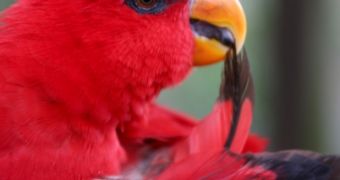A recent study published in the open-access journal PLoS ONE on October 3rd ended a 120-year-old controversy on what happened with the fingers of reptilians that evolved into birds. Many speculated that birds simply lost their pinky and ring finger, while others said that they still existed, but were inhibited from developing since the embryonic stage.
Scientists at several large universities, including the Yale University, the University of Wisconsin-Madison and the Yale Peabody Museum of Natural History, worked together to analyze the evolution of birds by studying the oldest known fossils discovered. Their study indicates that all three fingers birds have originate from the same position in the embryo as the second, third and fourth human fingers.
Bird and reptilian fossils showed that bird fingers origin is the same in the embryo as that of fingers one, two and three in reptilians. Apparently, the other two of five fingers were lost during the evolution of dinosaurs, as an adaptation to their environment. Once dinosaurs were extinct and reptilians appeared, the cartilage condensations that spawned the fourth and fifth finger were suppressed and only three fingers developed, corresponding to the thumb, middle and ring finger in humans.
The homeotic transformation process is known among biologists as the time when some structures in the body of animals begin to develop at other positions than they were supposed to. This usually leads to major transformations, as is the case with the antennapaedia fruitfly mutant, which, at some point, began growing legs on its head instead of antennae.
Evolutionary biologists now believe that something similar happened as birds evolved, when the three fingers they had began growing from the embryonic position of finger two, three and four. Scientists are not yet entirely sure as to what may have caused this mutation, but more studies on birds, crocodiles and mice are underway to attempt to determine just that.

 14 DAY TRIAL //
14 DAY TRIAL //